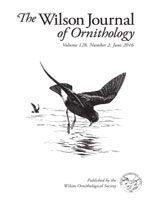With the discovery that the ultraviolet (UV) spectrum is visible to birds, studies have shown how this parameter can affect the ability of hosts of brood parasites to recognize eggs. However, the role UV reflectance plays in egg recognition has not been well studied in hosts of Brown-headed Cowbirds (Molothrus ater). Northern Cardinals (Cardinalis cardinalis) are common hosts that usually accept cowbird eggs, but evidence suggests that cardinals reject nonmimetic eggs more frequently. The purpose of this study was to determine if a reduction in UV reflectance of cowbird eggs would elicit a rejection response from the cardinal. Four treatments were used: (1) cowbird eggs covered with UV-block; (2) cowbird eggs covered with a control coating; (3) uncoated cowbird eggs used as a control, and (4) cardinal eggs covered with UV-block. Cowbird and cardinal eggs with UV-block were not more likely to be rejected than eggs in either of the control treatments. Cowbird and cardinal eggs are similar in both appearance and occasionally size, and high intraclutch variation has been found within cardinal clutches, all of which may be a constraint in evolving fine-tuned egg recognition. Furthermore, cowbird parasitism does not impose significant costs for cardinals, and therefore, selection pressures to evolve an ability to distinguish between cowbird and cardinal eggs are likely minimal.
BioOne.org will be down briefly for maintenance on 14 May 2025 between 18:00-22:00 Pacific Time US. We apologize for any inconvenience.
How to translate text using browser tools
30 June 2016
Reduced ultraviolet reflectance does not affect egg rejection by Northern Cardinals (Cardinalis cardinalis)
Virginia E. Abernathy,
Brian D. Peer
ACCESS THE FULL ARTICLE

The Wilson Journal of Ornithology
Vol. 128 • No. 2
June 2016
Vol. 128 • No. 2
June 2016
brood parasitism
brown-headed cowbird
egg recognition
Molothrus ater
northern cardinal
UV reflectance




